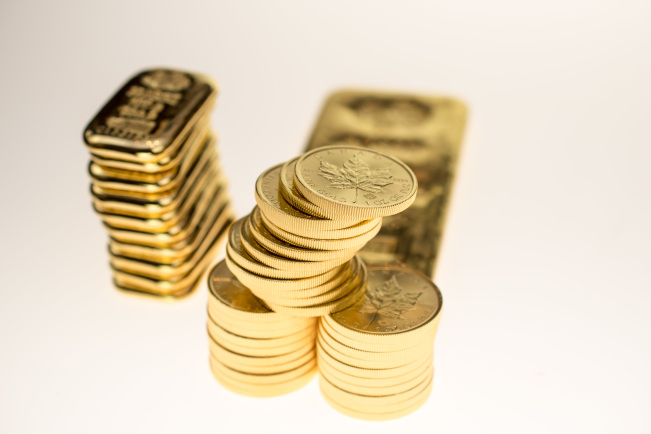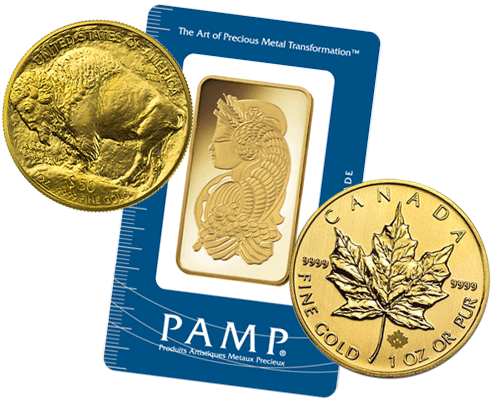Stockpiles: the Key to Gold as a Store of Value & Safe Haven
Much is written in the precious metals world about gold’s characteristics, as well as how the behaviour of the gold price allows gold to play the role of a unique financial asset that retains purchasing power over time, acts as a safe haven asset, diversifies risk, and provides hedging benefits.
However, much of the material written in this area skips over an explanation of how the simple, yet powerful, relationships and interactions of the gold price actually work. The appreciation of these simple characteristics and relationships facilitates a far more intuitive understanding of why holding gold – in the form of physical gold – can be so beneficial.
Stock-to-Flow
One of the commonly overlooked yet critical attributes of gold that allows it to play the role of a monetary asset par excellence is that physical gold has a vast above ground supply, thereby making the global gold market highly liquid.
Gold is mined to be accumulated and nearly all of the gold ever mined is still in existence in various forms, such as in the form of above ground central bank gold holdings, private investment gold hoards, gold jewellery, or within industrial, medical and scientific applications. With gold recycling services now highly advanced and widespread, this also allows gold holdings to be easily transformed between uses by refineries in a cost-effective manner.
Since nearly all the gold ever mined is still in existence, the world’s accumulated stock of gold is multiple times the annual addition to the stock, i.e. the flow of gold. For ease of illustration, assume that 186,000 tonnes of gold have been mined throughout history and that annual mine production is 3,100 tonnes of gold. This gives a total gold stock-to-flow ratio of 60 times. Depending on the gold price, global holders of gold (in all its forms) are able, and sometimes willing, to step up and participate in gold transactions.
Global gold supply is therefore affected, not just by annual gold mining output, but by the existence of this vast above-ground stock of gold. And it is this stock of gold, over the long-term, that has an influence on the gold price, and that can explain gold’s role as a store of value and as a safe haven asset, as well as explaining gold’s price correlations with other asset prices.
Store of Value and Long-Term Inflation Hedge
Over long periods of time, gold has been proven to retain its real purchasing power. Therefore, gold acts as a long-term inflation hedge and as the ultimate store of value. This may appear to be a complex magical process but the theory is quite simple.
A fiat currency whose supply expands recklessly (which is really all fiat currencies throughout history and at present) will become debased. This leads to price inflation, i.e. an increase in the price levels of goods and services expressed in that fiat currency. As goods and services prices rise, the price of gold also adjusts upwards to compensate for these price rises.
The gold price rises, because on a global basis, there always exists an exchange ratio between physical gold and all fiat currencies, and the vast worldwide above-ground stock of physical gold can always be valued in terms of fiat currencies. But unlike fiat currencies, physical gold cannot be debased. Therefore, the gold price, and the valuation of gold, simply captures and reflects the purchasing power of all fiat currencies, and acts as an inflation hedge and a stable store of value. In practice, in a free market, the gold price is actually a signal of future inflationary expectations, and so gold is known as an inflation barometer.
Is his 1977 book of the same title, a UC Berkeley professor, Roy Jastram coined this phenomenon “The Golden Constant”. Jastram analyzed price level data from 1560 to 1976 for England/UK and from 1800 to 1976 for the United States. He then measured gold’s purchasing power over these periods and found it to be constant over time. Jastram’s study was updated in 2008 by Jill Leyland and also extended to the French and German economies. Leyland’s analysis arrived at similar findings, and was especially illustrative of gold’s critical role during the hyper-inflationary period in early 1920s Germany during which paper currencies rapidly became worthless. The ‘Golden Constant’ was interpreted by both studies as being due to gold’s large but slowly growing supply, resistance to debasement, as well as the gold price’s unique behaviour in times of currency depreciation and market and political stress.
The gold as a currency hedge phenomenon can also explained by the above relationships. As fiat currencies become debased or suffer confidence shocks, they depreciate in value relative to gold, because gold has a large, slowly growing and finite above ground stock and cannot be debased. This brings us to the next point.
Gold as a Safe Haven and Hedge against Extreme Risk
Physical gold is a proven and accepted safe-haven. But why is this so? The answer is because gold acts as an inflation hedge and a currency hedge and so preserves wealth. In periods of market or economic stress, gold’s price rises because there is a flight to gold since, due to historical experience, the counterparty and default risk potential of most other assets gold comes to the fore, while gold has a highly liquid market, and gold is universally perceived as having no counterparty risk and no default risk. Therefore, gold takes on the role of financial insurance against monetary crises, geopolitical risks, and systemic financial system risks. Because of its high liquidity and lack of counterparty risk, gold also becomes the high-quality collateral during periods of extreme risk.
Gold’s Price Correlation vs Other Asset Prices
Fans of modern portfolio theory will be familiar with the fact that the gold price is not highly correlated with the prices of most other financial assets. Therefore, adding gold into an investment portfolio can lower portfolio risk. Again, the question is why? The answer is quite simple.
The low, and sometimes negative, correlation between the gold price and other asset prices is due to the gold price not being as dependent on economic and business cycles as most other financial asset or commodity prices. Therefore, the gold price doesn’t react to economic cycles in the same way as most other asset prices. This differing price reaction is… you guessed it… due to the large above-ground stocks of gold which can, due to gold’s liquidity and transformability, be mobilized (by price inducement) to enter the market place irrespective of the economic cycle.
Mobilizing physical Gold
As a practical example, this ability of existing above ground stockpiles of gold to be mobilized into the market is well illustrated by the large number of 400 oz gold bars that flowed out of central bank vaults and ETFs in London during 2013-2015, were transformed by Swiss gold refineries into smaller bars, and then flowed east to Asia. The west to east movement reversed in 2016, with large amounts of gold being imported into Switzerland from locations such as Dubai, Thailand, Turkey and Hong Kong for processing back into large gold bars and then sent back to the London market. Another example is gold recycling, which has an ongoing inverse relationship with the gold price. As the price rises, supplies of gold from recycling sources rise, since the price motivates potential sellers to enter the market. It’s therefore worth remembering that gold mining supply is not the full story. Some of these huge above ground stocks of physical gold can and do enter the market in various ways and at various times. In this article, we have not even touched on the controversial subject of central bank gold leasing, a potentially large and hidden supply overhang, but a subject left for future analysis.
Popular Blog Posts by BullionStar
 How Much Gold is in the FIFA World Cup Trophy?
How Much Gold is in the FIFA World Cup Trophy?
 Essentials of China's Gold Market
Essentials of China's Gold Market
 Singapore Rated the World’s Safest & Most Secure Nation
Singapore Rated the World’s Safest & Most Secure Nation
 Infographic: Gold Exchange-Traded Fund (ETF) Mechanics
Infographic: Gold Exchange-Traded Fund (ETF) Mechanics
 BullionStar Financials FY 2020 – Year in Review
BullionStar Financials FY 2020 – Year in Review
 Back-to-Back Records: BullionStar Sets New Highs in September and October 2025
Back-to-Back Records: BullionStar Sets New Highs in September and October 2025
 Jim Rogers on Gold, Asia, and the Future of Money
Jim Rogers on Gold, Asia, and the Future of Money
 Market Update: Physical Gold & Silver Shortages
Market Update: Physical Gold & Silver Shortages
 A Glimpse Inside BullionStar’s Precious Metals Vault
A Glimpse Inside BullionStar’s Precious Metals Vault
 Rick Rule on Why Gold Could Reach $10,000 as the Dollar Declines
Rick Rule on Why Gold Could Reach $10,000 as the Dollar Declines




 BullionStar
BullionStar 0 Comments
0 Comments












